Paul Gets Hearing Aids
November 2, 2023 – Day 35
We chose Kartchner Caverns State Park as stop on our return home because we had liked Carlsbad Caverns so much on our last trip out west. We were really disappointed as we pulled into the park in the dark only to find a big sign that said “All Tours Sold Out.”
After unhooking the Jeep, then leveling the RV and putting the slides out. Susan quickly got online and was able to book tours for the 2nd. The sign must have been for the day we arrived.
(susan here: I call it the “fun house”! It will never stop amusing me how you can press a few buttons, the walls move and we pretty much double our living space.)
We arrived at our appointed time of 9:30 for our 10AM tour.
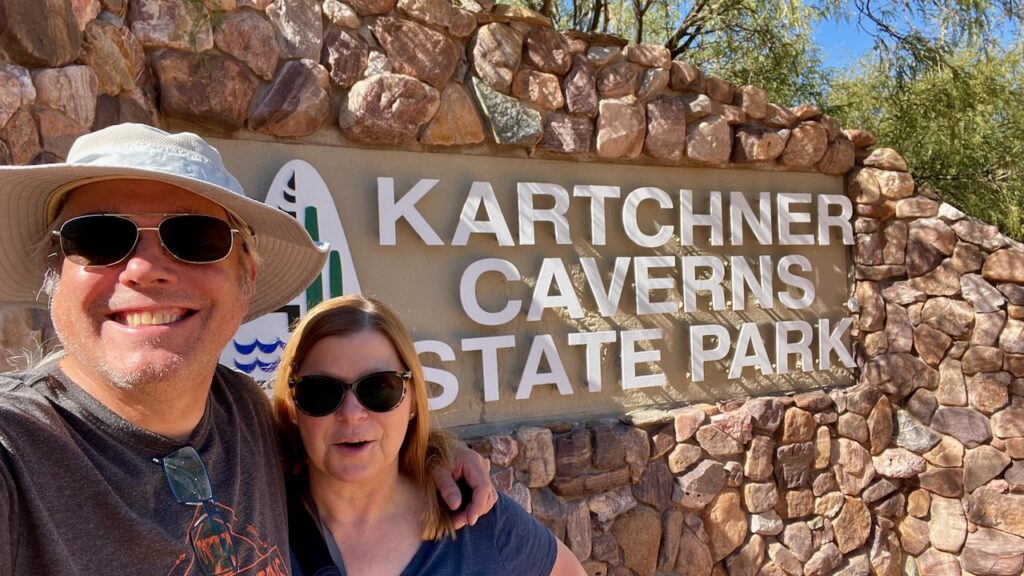
Oh Glenn and Howard, they have real chain saws here, not like your wimpy ones.
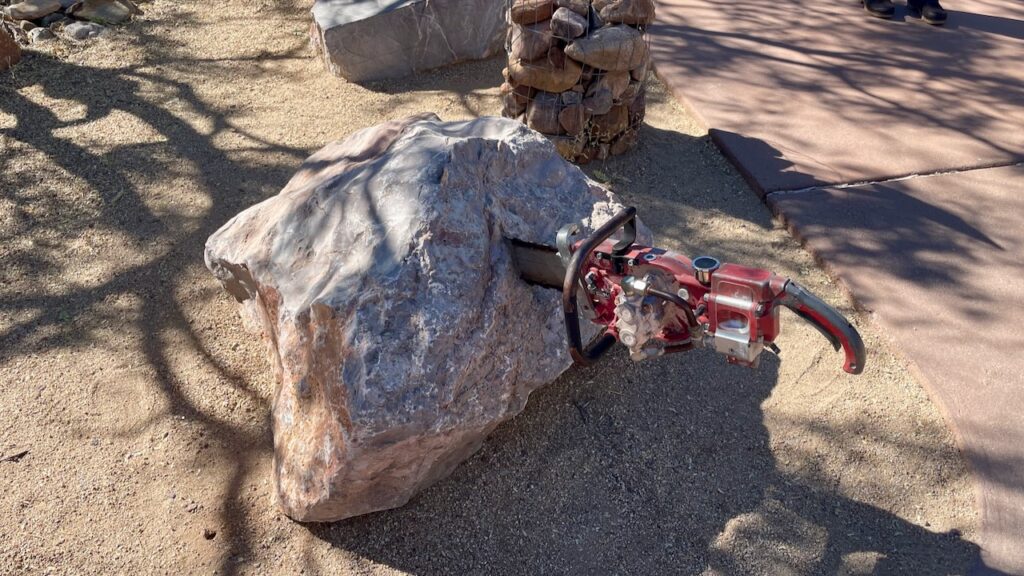
The caverns were discovered in 1974, when cavers Gary Tenen and Randy Tufts found a narrow crack in the bottom of a sinkhole, and followed the source of warm, moist air toward what ended up being more than 2.5 miles (4.0 km) of pristine cave passages.
Randy Tufts, PhD, who at the time of his death was a geologist and lunar and planetary scientist for NASA, was introduced to caving as a young boy by his maternal uncle, who was also a geologist. His uncle showed Randy caves in Arizona that had been vandalized in various ways including graffiti, litter, and the theft of stalactites and stalagmites. At the age of 13, Randy read an English children’s adventure book entitled, “Five Boys in a Cave.” This book inspired him. At the time he decided to find a cave that had not ever been vandalized and protect it.
https://en.wikipedia.org/wiki/Kartchner_Caverns_State_Park
The attention to preservation is extreme. First, you need to get your shoes disinfected if your footwear had been underground anytime in the previous 15 years. (susan here: people have shoes that are 15 years old? WHO ARE THESE PEOPLE?) It’s because of White Nose Syndrome and it’s roughly 90% fatal to bats. It was first identified in a cave in NY in 2006. Since then it’s spread across the country to 33 states and 7 Canadian provinces. In case you’re wondering at least 40 bats eat only insects and some of those are mosquitoes.
Unlike Carlsbad the tours are not self guided (susan here: take that to mean you can linger in spots that really grab your attention). One ranger teaches you, but the second is clearly the “cop ranger”, there to make sure you don’t do anything dumb, like touch anything, brush up against anything. Bacteria and lint are incredibly destructive to caves. They’re also there to sweep the stragglers.
You can’t take photographs! Ok, you can do it on a photo tour but those are a limited number per month and they’re $125 per person! Google some if you want but we’re here to tell you the caves don’t look like those photos. The cave is pretty dark but lit but lacks the Hollywood lighting that Carlsbad has. While we understand it’s to preserve the cave (light + moisture = algae) it doesn’t make for a particularly great viewing experience.
You go through two airlock doors (susan here: repurposed restaurant refrigerator doors) as well as some water misters to help maintain the original 72 degrees and 99% humidity. You see, Kartchner is a wet cave. (susan here: very, very wet, think tropical forest dripping with humidity wet. And then add MORE humidity.)
Why is it so important to preserve Kartchner Caverns’ delicate environment? It is one of America’s rare “wet” caves, maintaining a high degree of moisture with very little dry air flowing in from the surface. Between periods of flooding, moisture is stored in the mud of the cave floor. This wet environment brings Kartchner Caverns to life in more ways than one. Water allows cave organisms to survive, and it creates remarkable formations that constantly grow and evolve. In this sense, the cave itself is almost like a living organism.
In a dry cave, by contrast, cave formations have stopped growing because an influx of surface air has dried up all the moisture. In adapting Kartchner Caverns for public use, park officials had to proceed with the utmost care to avoid letting in too much air, which could have meant “death” for the cave formations.
Are we glad we went? Yes. Was it a good value? That’s hard to quantify. Our sample size is small as we’ve never been in a wet cave before and we’ve barely visited any caves. If you’ve never been to Carlsbad, it would be a great place. Except, we had just visited Carlsbad months earlier. We both agreed that Carlsbad was a better experience but we both recognize that Carlsbad is a damaged cave and this cave less so–all human activity in these places damages them.
After the morning’s tour we headed back to the coach for lunch. Later we headed back to the museum.
Paul got to try on some hearing aids.
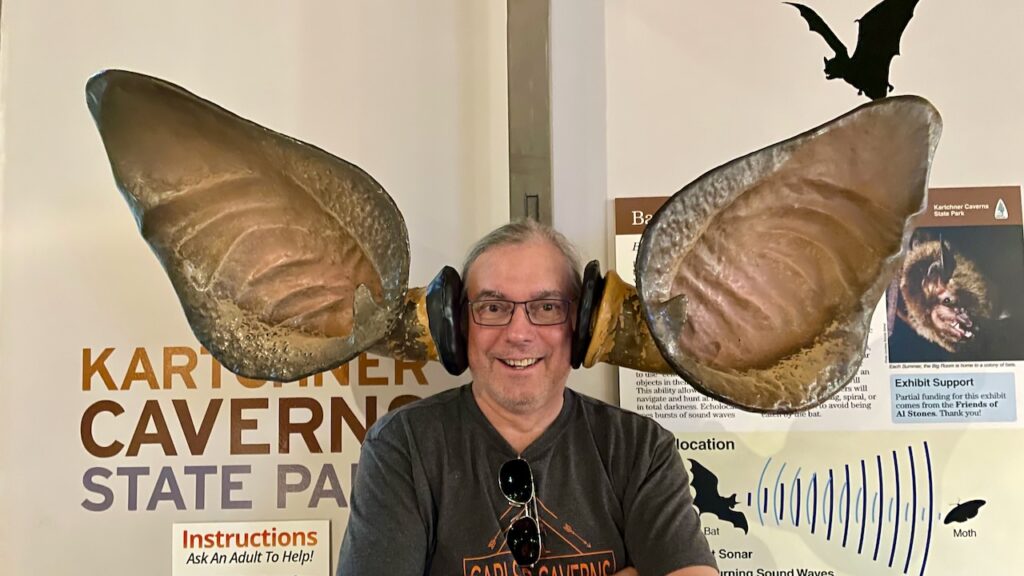
The hearing was, well, interesting. Paul said things weren’t louder, but more spacious, more reverberant.
There was a hummingbird garden outside. Back home we only get the Ruby Throated hummingbird. There are half a dozen species at this time in Kartchner State Park. Sadly, we only saw an Anna’s which we already have seen. But, it was fun watch the little guy feed. They were noisy! The trees were alive with the sounds of them, but we could only see them fleetingly as they visited flowers.
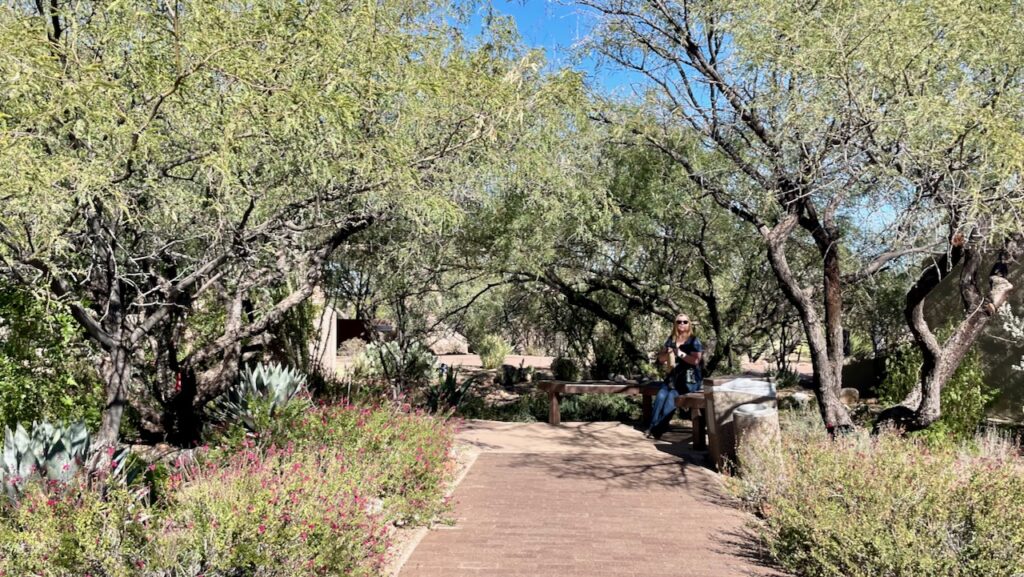
We went back to the campsite. Paul set up the radio while Susan documented the sun’s gorgeous display. At Susan’s prodding, Paul did look up from his batteries and wires to enjoy the views.
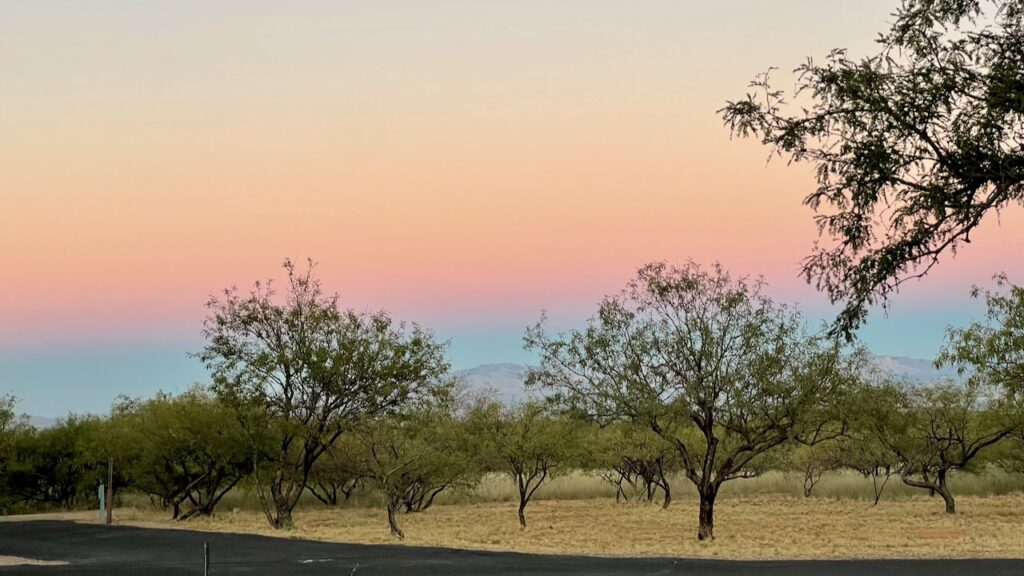
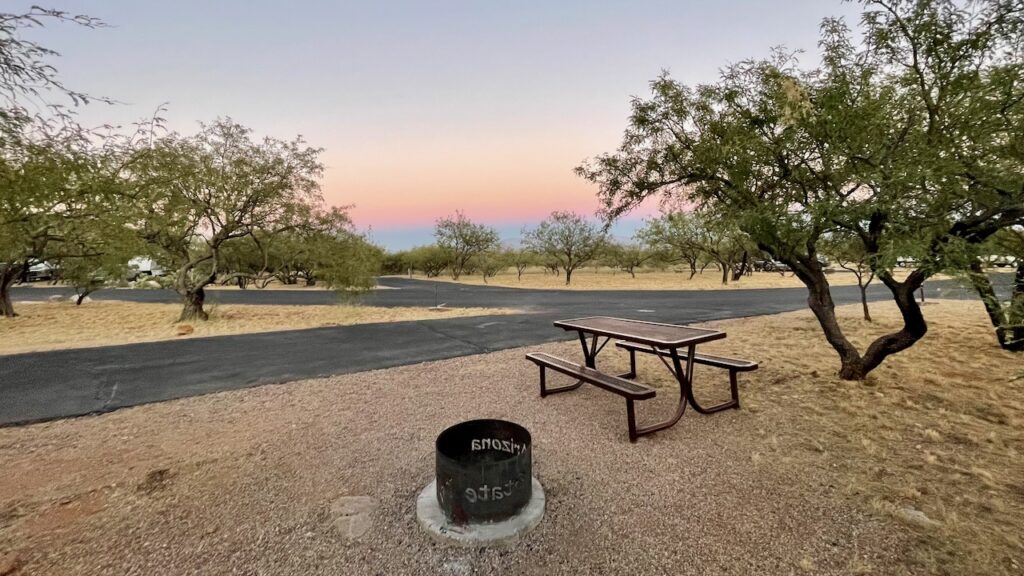
Daily: 0
Return Total: 215
Return Overall Miles/Day: 215
Return Driving Miles/Day: 108
Overall Total: 3,351
Total Driving Miles/Day: 305